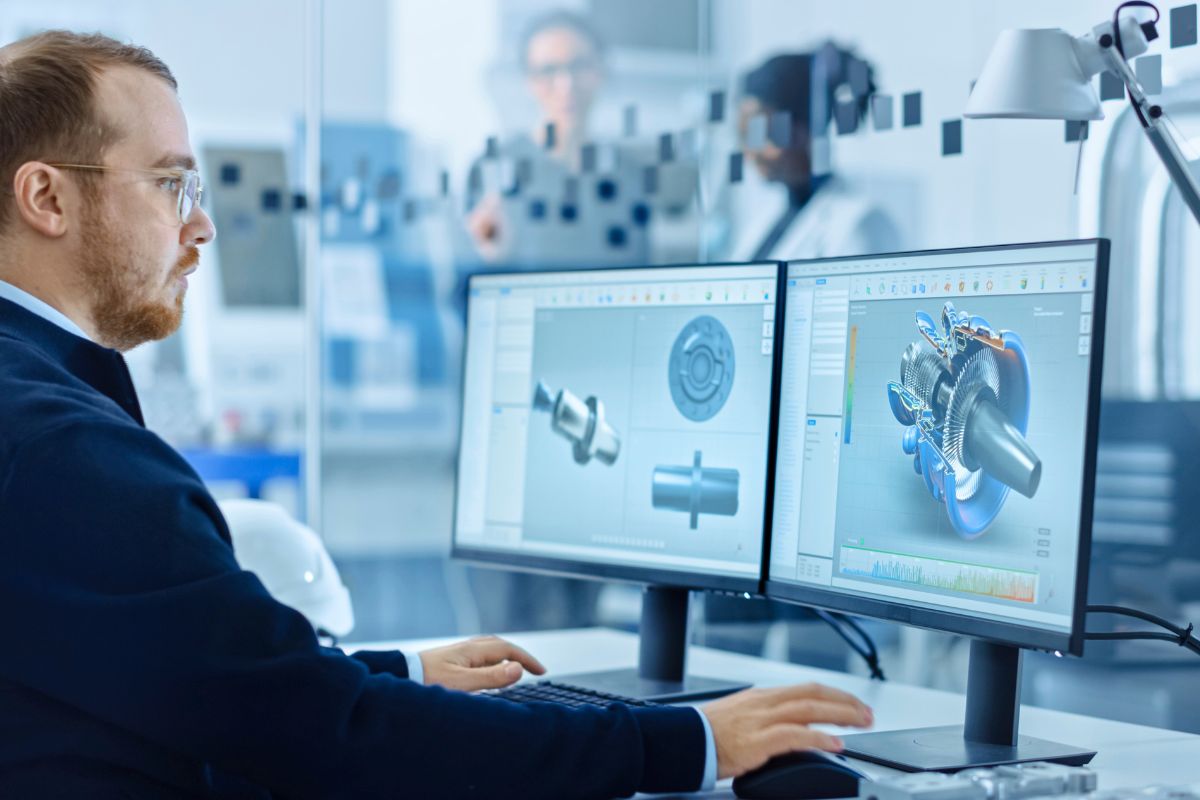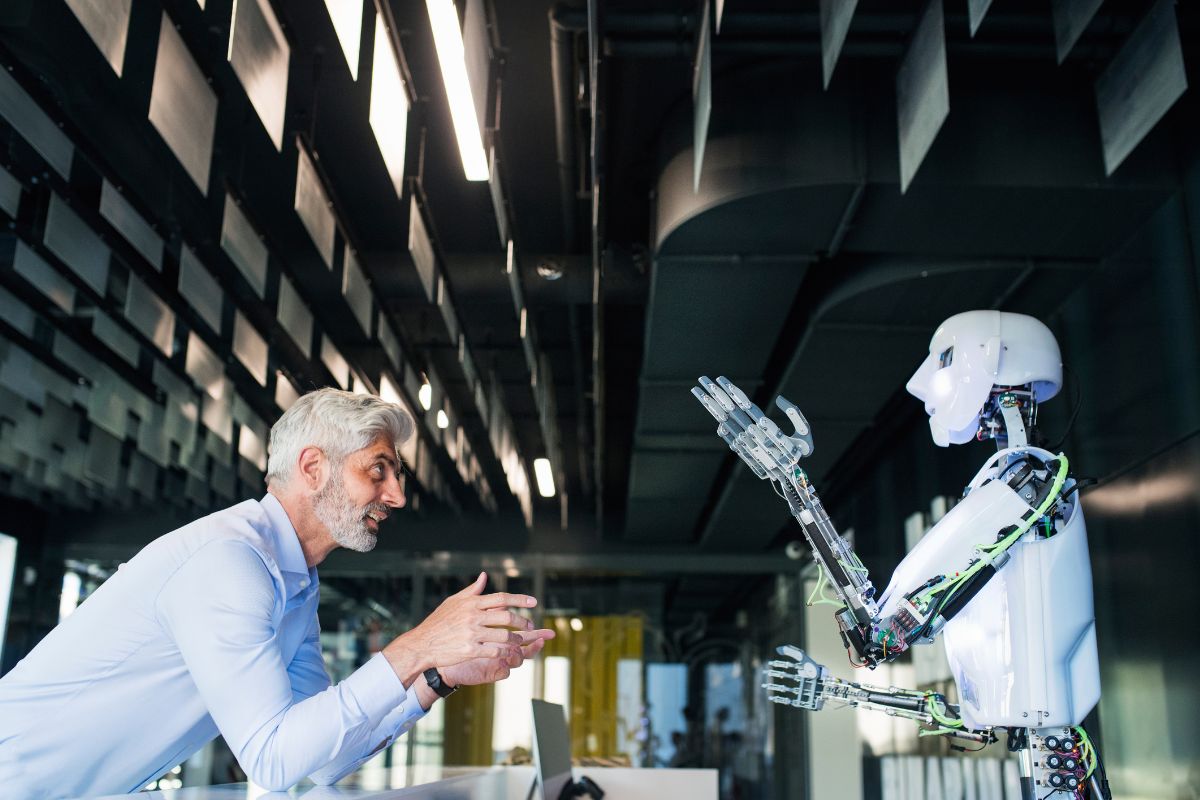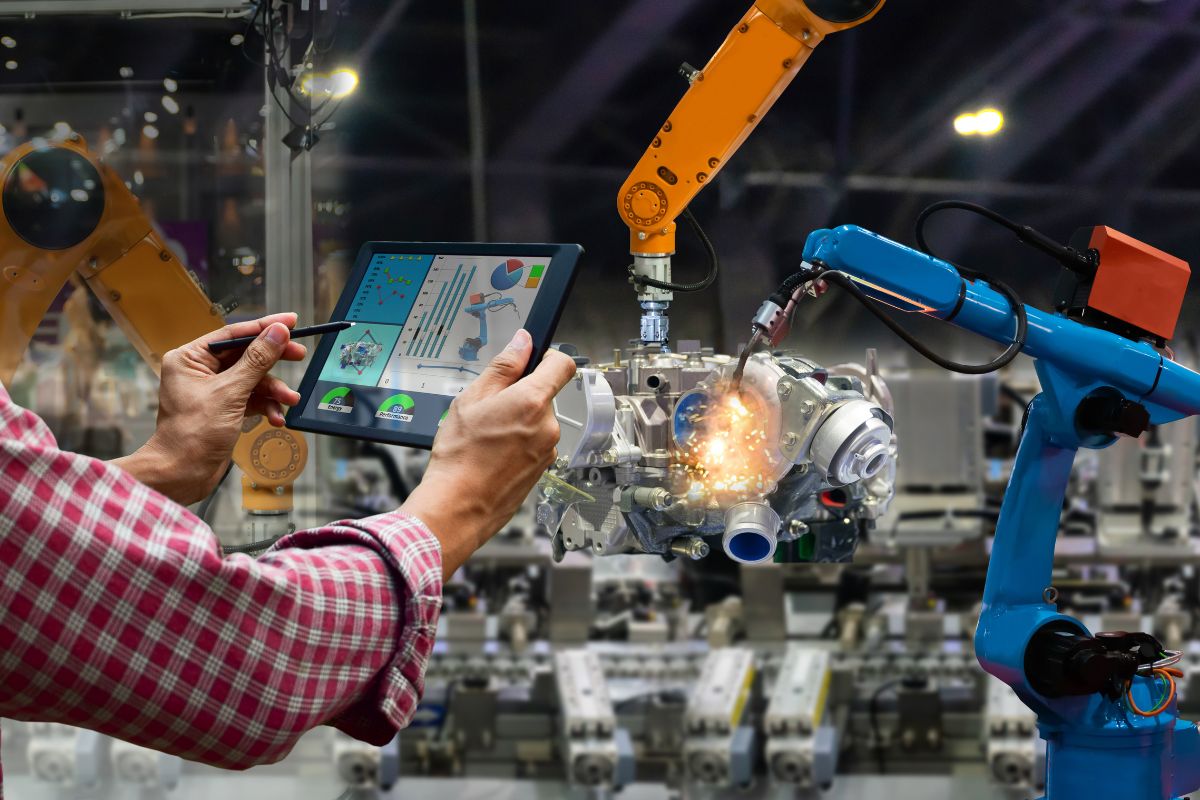Robotics software development is at the forefront of technological advances, with a significant impact on the global tech industry.
Robotics software is developing rapidly, allowing robots to perform at levels never seen before and fostering an exciting period of automation, intelligence, and adaptability.
We talk about innovation in many branches such as production, enterprise operations, and even medicine, starting from simple programming commands to complex artificial intelligence algorithms.
For this reason, it is important to investigate new trends in robotics software. This article shows you the most recent advances that lead the robot technology and hold the revolutionary potential around the world allowing you to take advantage of the full range of capabilities they provide.
5 Trends In Robotics Software Development
Now, let’s explore the latest robotics trends in software development in 2024 shaping the field of robotics.
1. Advancements In AI and Machine Learning
Artificial intelligence (AI) and machine learning (ML) have influenced the rapid growth of robotics software development, but how?

Today, artificial intelligence (AI) and machine learning algorithms are essential parts of robotics softwar, as they allow robots to be “autonomous” in certain senses such as:
- See their environment and decide what to do by recognizing objects, interpreting scenes, and fusing sensors in perception tasks, allowing machines to navigate with precision in complicated environments.
- Learn from errors through experiments and failures thanks to reinforcement training techniques, which improve their ability to make decisions in dynamic contexts.
This efficiency is thanks to custom neural network architectures such as recurrent neural networks (RNN) for sequential decision-making or convolutional neural networks (CNN) for vision-based activities.
A research by viso.a shows a reduction in voice command errors to 30% and image recognition of 26%.
2. Integration Of Edge Computing
Edge computing is about offering substantial benefits to robotic systems including improved mobility and rapid processing.
Edge hardware designs are usually centralized, allowing constant connectivity with distant servers or cloud platforms.
By moving computing closer to the data source (typically located on the robot or a nearby network), edge computing solves many problems.
This makes it possible for robots to perform important tasks in real-time without relying on external servers, such as interpreting sensor data, ensuring some level of consciousness, and orientation.
Additionally, edge computing improves cloud computing by delegating computationally demanding jobs to distant servers and managing time-sensitive processes locally.
3. Continued Growth of ROS
ROS, Robot Operating System, allows the construction of reliable and flexible robotic systems.
In addition, it offers a large collection of libraries, tools, and network parts along with a flexible framework to develop, model, and deploy robotic applications.
Although ROS is an open-source framework, it has fostered cooperation and creativity among robotics users, resulting in a vast ecosystem of software and resources.
Furthermore, before implementing robotic algorithms on real robots, developers can quickly prototype and test them in virtual environments thanks to developments in ROS-based simulation frameworks.
Since its inception in 2007, ROS has seen significant progress, allowing for the creation of sophisticated robotic systems for a variety of industries, including healthcare, industrial automation, autonomous vehicles, and more.
According to the official ROS website, more than 740 companies used ROS in 2022. New versions that addressed the shortcomings of the original ROS and improved its capabilities for real-time and industrial-grade installations helped to facilitate this expansion.
4. Human-Robot Interaction (HRI)
With an emphasis on the seamless integration of robots in human-centered contexts, research on human-robot interaction (HRI) appears relevant within the field of robotics software development.

The goal of HRI is to improve interactions between humans and robots in terms of effectiveness, and intuitiveness. This involves the creation of algorithms and cognitive interfaces that allow robots to understand and react in real-time to human expressions, gestures, and commands.
In short, installing social intelligence into robots so that they can collaborate and communicate meaningfully with humans.
HRI applications are found in a wide range of fields, such as healthcare, education, entertainment, and assistive robotics.
5. The Rise Of Swarm Robotics
Thanks to its decentralized control and collective behaviors, swarm robotics has become a viable paradigm for transforming robotic applications.
This focuses on coordinating a large number of basic robots to perform complicated tasks cooperatively, in contrast to traditional robotic systems that rely on centralized coordination.
Recently, new methods and algorithms for swarm coordination, communication, and self-organization have been investigated in swarm robotics research.
This includes methods that are inspired by biological systems, such as the collective actions of social insects and groups of animals.
Swarm robots have applications in everything from construction and exploration to environmental monitoring and disaster response. Robotic systems can effectively address problems that exceed the capacity of individual robots using the collective intelligence and adaptability of swarms.
Additionally, according to a new analysis from MarketDigits, the global swarm robotics market is expected to reach $3,834.2 million by 2030, growing at a compound annual growth rate (CAGR) of 27.5% between 2023 and 2030.
Other Robotics Tech Trends
1. Multi-Robot Collaboration
The creation of collaborative multi-robot systems is a popular topic in robotics software development with great promise for a wide range of applications.
When compared to single-robot approaches, multi-robot systems offer more efficiency, scalability, and robustness in fields like manufacturing, agriculture systems, search and rescue, and exploration.
This field of study includes swarm robotics, in which a large number of simple robots work together under decentralized control and self-organization to accomplish complex tasks.
Distributed control algorithms also allow several robots to synchronize their movements in real-time and adjust to changing surroundings.
Multi-robot cooperation has applications in everything from shared transportation and monitoring to dispersed sensing and infrastructure upkeep.
2. Interoperability and Standards
Within the robotics community, interoperability and standardization initiatives are essential to promote cooperation, compatibility, and creativity.
As sensors, software frameworks, and robotic platforms proliferate, interoperability ensures seamless integration and communication between heterogeneous robotic systems.
Common protocols, interfaces, and data formats are defined by standardization initiatives, such as those led by the International Organization for Standardization (ISO) and the Robotic Operating Systems Industrial Consortium (ROS), to enable interoperability between hardware and software components.
Furthermore, standards and interoperability allow researchers, developers, producers, and end users to work together promoting the use and development of robotic technologies in a variety of sectors and industries.
3. Safety and Regulation
Robotics safety and regulatory compliance are receiving more attention as a result of the rising use of robots in a variety of contexts.
To avoid accidents, injuries, and property damage, robotic systems’ safety and how they interact with people and the environment must be guaranteed.
The International Electrotechnical Commission (IEC) and the Occupational Safety and Health Administration (OSHA) are two examples of regulatory bodies and standards organizations that set rules and regulations for the development, use, and functioning of robots in commercial, industrial, and consumer settings.
Risk assessment, hazard mitigation, emergency stop systems, and preventative measures like safety fences and interlocks are all part of adhering to safety regulations.
Furthermore, ethical questions about how robots will affect work, privacy, and society are becoming more and more important.
The robotics sector can promote public trust, reduce risks, and guarantee responsible innovation and robotic technology adoption by addressing safety and regulatory concerns.

4. Teleoperation
To improve human-robot interaction and increase the capabilities of robotic Teleoperation the integration of teleoperation interfaces in robotics is becoming increasingly popular.
Thanks to this robots can be controlled remotely by operators allowing operations to be carried out in dangerous, inaccessible, or remote environments.
Its sophisticated interfaces improve situational awareness and dexterity by providing operators with immersive vision, simple control mechanisms, and real-time feedback.
Additionally, its applications are found in many different fields, such as telemedicine, space exploration, underwater exploration, and disaster relief.
5. Energy Efficiency and Sustainability
Driven by the need to minimize operating costs and environmental impact while optimizing the autonomy and lifespan of robotic systems, energy efficiency, and sustainability are becoming increasingly crucial factors in robotics.
Energy-aware algorithms maximize performance and reliability while minimizing energy consumption by scheduling tasks, planning motions, and optimizing resource utilization.
Additionally, advances in renewable energy sources (such as fuel cells, solar energy, and energy harvesting) allow robots to operate independently for longer periods without the need for external power sources.
Robust actuators, recyclable parts, and lightweight materials are just a few examples of sustainable design ideas that help reduce the environmental impact of robotic systems.
Robotics developers and researchers can help curb global warming, preserve natural resources, and provide green solutions for a variety of industries and applications by emphasizing energy efficiency and sustainability in their work.
Summing Up
To summarize, the major developments in robotics software development are coming together to create a future where standards and interoperability will enable collaborative multi-robot systems to work safely and effectively while improving human-robot interaction.
Teleoperation expands the capabilities of robotic systems with an emphasis on safety and regulation.
Advances in sustainability and energy efficiency guarantee that these systems operate in an environmentally sustainable manner.
Through increasing efficiency, adaptability, and dependability in robotic applications, these interconnected trends have the potential to transform industries in addition to spurring innovation.
A future driven by robotics technology that is more connected, effective, and sustainable is anticipated as a result of these trends, which will affect everything from manufacturing and logistics to healthcare and education.






























